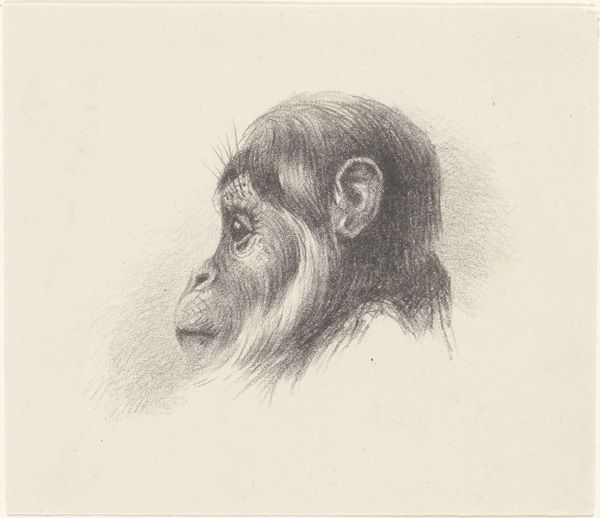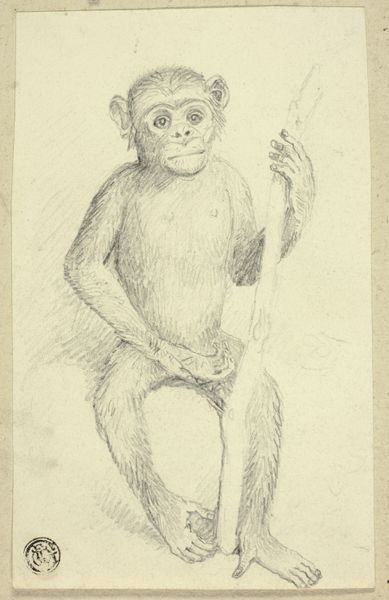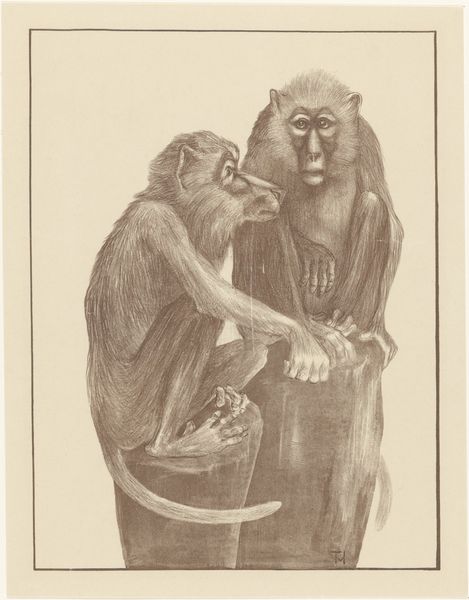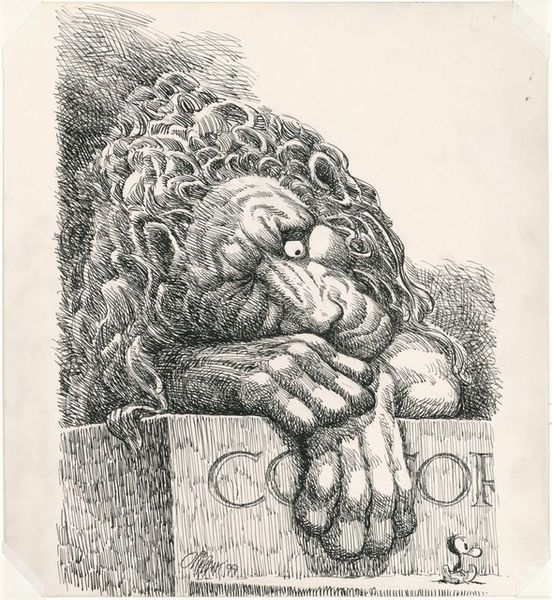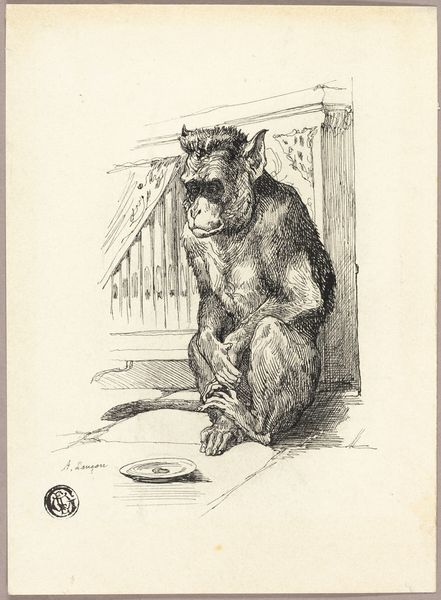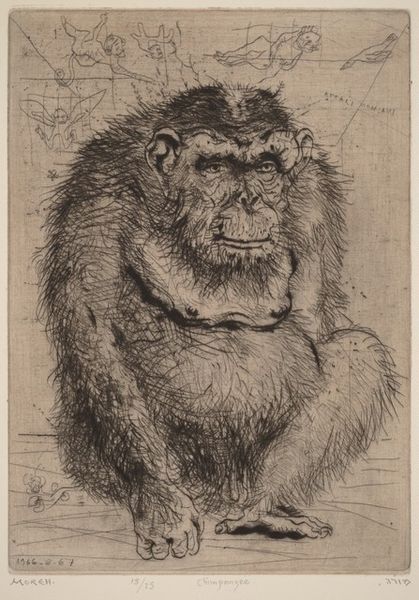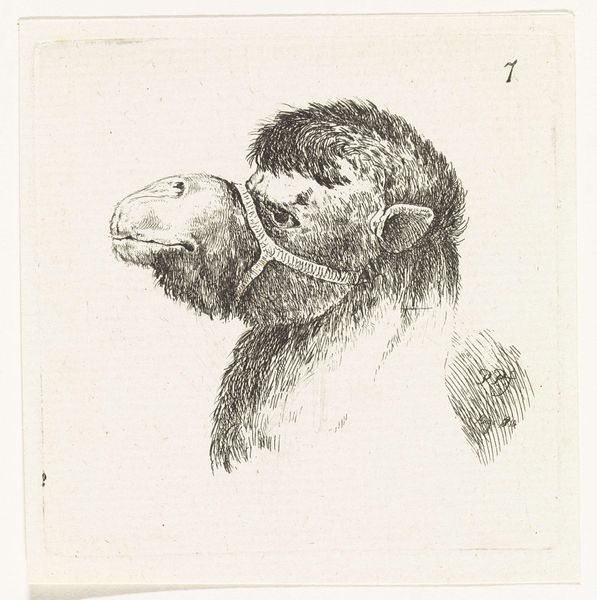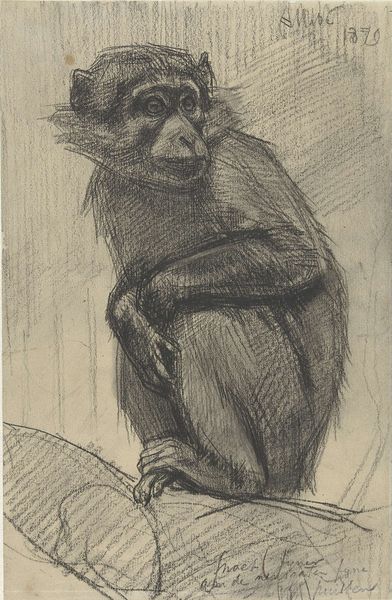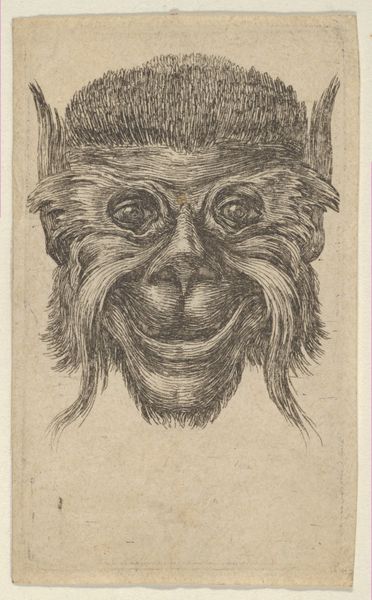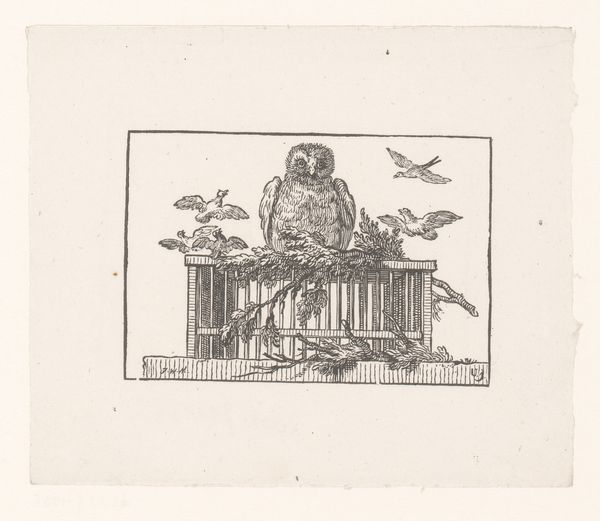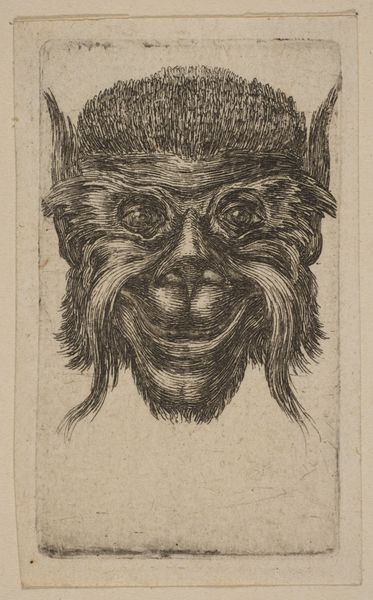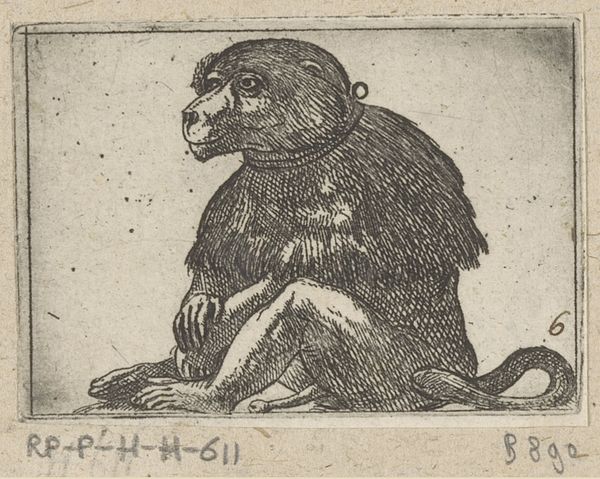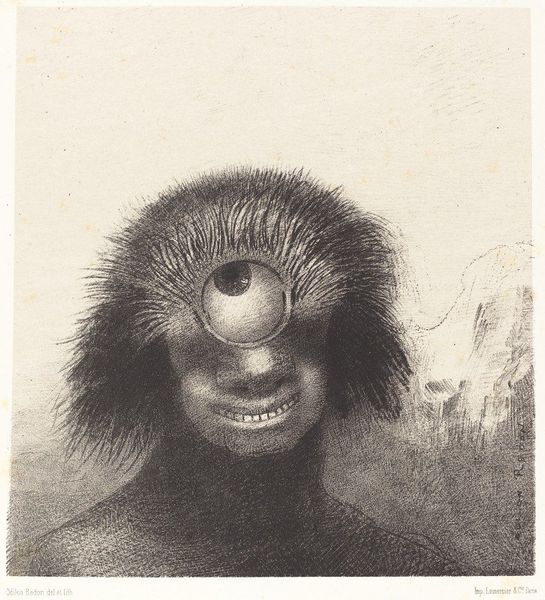
drawing, pencil
#
portrait
#
drawing
#
figuration
#
pencil drawing
#
pencil
Dimensions: height 80 mm, width 98 mm
Copyright: Rijks Museum: Open Domain
Curator: This understated drawing, “Zittende aap op kist,” or “Seated Monkey on a Box," by Theo van Hoytema, made between 1878 and 1890, presents an interesting point for discussion. What is your first impression? Editor: It's incredibly detailed. The texture of the monkey’s fur contrasts so starkly with the smooth surface of that box. There’s almost something melancholic in its eyes. Curator: Van Hoytema's rendering using pencil emphasizes the craft behind this image. It speaks volumes about material observation and labor, and forces us to contemplate how popular fascination with the natural world fueled animal depictions at the time. The pencil itself, the brand, the quality, would impact the end result here. Editor: I see how the choice of medium speaks to accessibility, but this also prompts thoughts about the socio-political implications during that period. Depicting the animal world – specifically primates – begs us to examine prevailing views on race and colonialism at the time. Was it ever common to keep apes like this as pets? What does it say about power dynamics? Curator: That's insightful. One might also ask, what was the role of these images in circulating ideas about the "other?" Considering this, what might be inferred about van Hoytema’s working methods here? What pencils did he favour, and what did that imply? What kind of paper did he choose, and where was it produced? Editor: Indeed. Placing it within a discourse on visual culture exposes a darker subtext. Were those who were consuming this art considering the animal trade and colonial exploitation necessary for this piece to even exist? The gaze is never neutral. Curator: Precisely. And these details underscore the materiality of it all, that such issues of access and representation depend on the supply chains behind artistic production. The work transcends merely a drawing and becomes evidence. Editor: Absolutely, acknowledging those connections helps us interpret it critically. It allows us to discuss the nuances of the subject in a specific cultural environment that continues to impact modern perceptions. It feels somewhat disquieting knowing how these issues have been portrayed historically. Curator: This pencil drawing can spark larger dialogues about industrial processes and cultural memory. Its simple form speaks to something quite layered and challenging when viewed through the right lens. Editor: Yes. It makes you wonder if, through artistic representations such as these, we can see ourselves and our cultural biases more clearly.
Comments
No comments
Be the first to comment and join the conversation on the ultimate creative platform.
